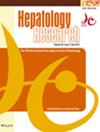Impact of the revised Japanese indication criteria for deceased donor liver transplantation on liver cirrhotic patients of Child–Pugh classification B with hepatocellular carcinoma
Abstract
Aim
This study aimed to evaluate the impact of the revised deceased donor liver transplantation (DDLT) criteria on hepatocellular carcinoma (HCC) patients newly eligible under the Child–Pugh classification B (CP-B), by focusing on the prognosis and the risk of HCC recurrence beyond the Japan criteria while on the waiting list.
Methods
A retrospective analysis was carried out on 1155 patients diagnosed with HCC at Kanazawa University Hospital between 2006 and 2021. Prognosis and recurrence were analyzed for patients eligible for DDLT under the revised criteria.
Results
Of the 1155 patients, 57 (4.9%) were eligible for DDLT according to the revised criteria. Five patients who underwent liver transplantation had a better prognosis compared to others who received treatments like radiofrequency ablation and transcatheter arterial chemoembolization. Patients with Child–Pugh score (CP) score of 7, a single tumor, and low des-γ-carboxy prothrombin (DCP) levels had favorable outcomes without transplantation, although long-term survival was superior with transplantation. However, 27.5% of eligible patients experienced recurrence or death within 30 months, which might disqualify them from DDLT. A scoring algorithm was developed based on CP score ≥8, multiple tumors, and DCP > 100 IU/dL. Patients with scores of 1 or 2 had 5-year survival rates of 40% and 30%, respectively, and most would meet the Japan criteria after 30 months. For patients with a score of 3, living donor liver transplantation should be prioritized.
Conclusions
The revised DDLT criteria improve access to transplantation for CP-B patients with HCC, but the risk of progression or recurrence during the waiting period remains. Careful evaluation, bridging therapies, and continuous assessment are crucial for optimal outcomes.


 求助内容:
求助内容: 应助结果提醒方式:
应助结果提醒方式:


